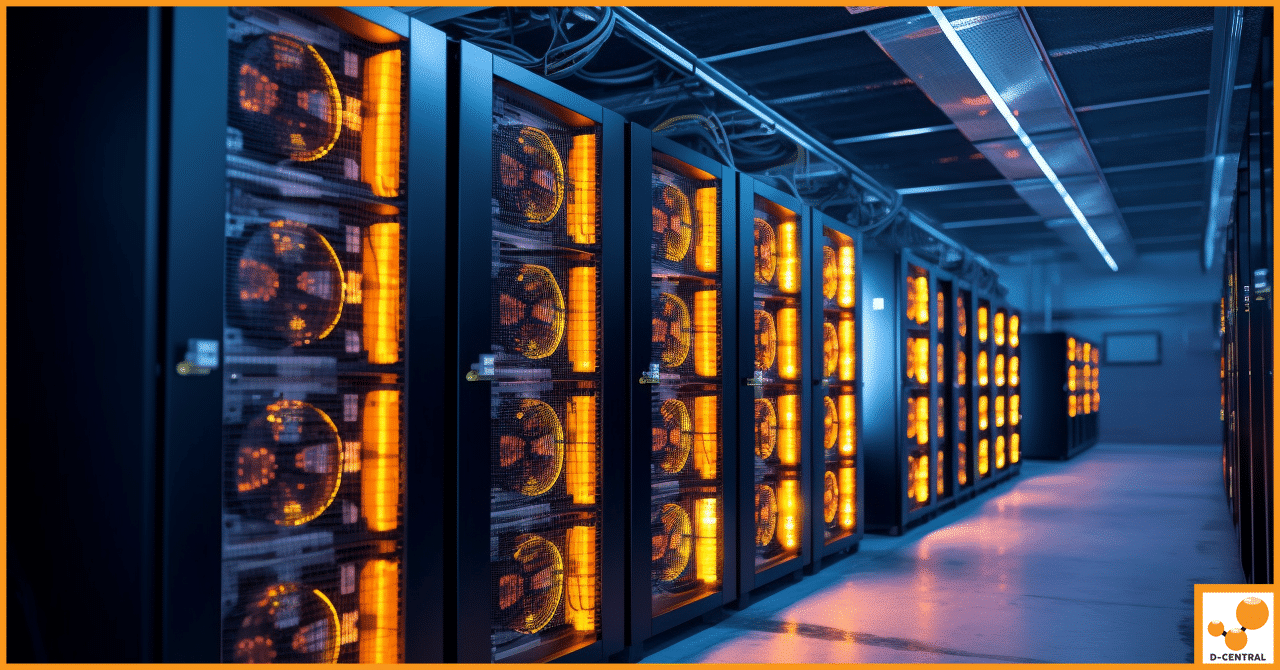
The Importance of ASIC Miner Shrouds in Bitcoin Mining Farms
In the complex world of Bitcoin mining, Antminer Shrouds have emerged as an important tool to optimize the performance and
4479 Desserte Nord Autoroute 440, Laval, QC H7P 6E2

In the dynamic world of cryptocurrency mining, the efficiency and reliability of your equipment are paramount. At the heart of many mining operations lies the Bitmain APW3 PSU, a powerhouse that has become a staple for miners seeking optimal performance and durability. Designed to cater to the rigorous demands of continuous mining, the Bitmain APW3 PSU is renowned for its ability to deliver stable power under varying conditions, making it an essential component for anyone serious about mining.
The Bitmain APW3 PSU stands out in the crowded market of power supply units for several reasons. Its high efficiency and robust build quality ensure that mining rigs run smoothly, maximizing uptime and profitability. This power supply unit is compatible with a wide range of mining hardware, offering versatility to miners who may use different types of ASIC miners or GPUs. Its widespread use across the globe is a testament to its reliability and the trust the mining community places in it.
However, like any piece of sophisticated mining equipment, the Bitmain APW3 PSU is not without its challenges. Users may encounter common issues such as overheating, power fluctuations, and connectivity problems, which can impact mining efficiency and equipment longevity. Recognizing and addressing these challenges early is crucial for maintaining a profitable mining operation.
This article aims to provide a comprehensive guide to troubleshooting common issues with the Bitmain APW3 PSU. By understanding the symptoms, causes, and solutions to these problems, miners can ensure their operations run as smoothly and efficiently as possible, safeguarding their investment and maximizing their returns in the competitive world of cryptocurrency mining.
The Bitmain APW3 PSU is a cornerstone of efficient and effective cryptocurrency mining operations. Its design and capabilities are tailored to meet the high demands of continuous mining activities, ensuring that mining rigs operate at their peak performance. Below, we delve into the specifications and features that make the APW3 PSU an ideal choice for miners, followed by an exploration of its critical role in mining operations.
The Bitmain APW3 PSU is engineered with precision to cater to the needs of high-performance mining rigs. Here are some of the technical specifications that underscore its suitability for mining operations:
The Bitmain APW3 PSU plays a pivotal role in the ecosystem of cryptocurrency mining by providing a stable and reliable power source to mining rigs. Its impact on mining efficiency can be observed in several key areas:
In summary, the Bitmain APW3 PSU is more than just a power supply unit; it is a critical component that supports the heart of cryptocurrency mining operations. Its specifications and features are meticulously designed to meet the demands of modern mining activities, while its role in powering mining rigs directly influences the efficiency, scalability, and profitability of mining ventures.
The Bitmain APW3 PSU, while robust and reliable, is not immune to issues that can affect its performance and the overall efficiency of mining operations. Understanding these common problems and recognizing their symptoms early can help miners take swift action to mitigate risks and prevent downtime. Below are some of the prevalent issues encountered with the APW3 PSU, along with their associated symptoms.
Symptoms:
Symptoms:
Symptoms:
Symptoms:
Recognizing these symptoms early and understanding their potential causes are crucial steps in maintaining the health and efficiency of cryptocurrency mining rigs. In the following sections, we will explore troubleshooting techniques and preventive measures to address these common issues with the Bitmain APW3 PSU.
Effective troubleshooting of the Bitmain APW3 PSU can prevent minor issues from escalating into major problems that could halt mining operations. This guide provides step-by-step instructions and strategies to diagnose and resolve some of the most common PSU problems.
Step-by-Step Guide:
How to Test and Ensure Stable Power Output:
Tips on Securing Connections and Preventing Common Errors:
Strategies for Improving Ventilation and Cooling:
By following this troubleshooting guide, miners can address common issues with the Bitmain APW3 PSU, ensuring their mining operations run smoothly and efficiently. Regular maintenance and proactive troubleshooting can significantly extend the lifespan of your mining hardware and improve your mining profitability.
Maintaining the Bitmain APW3 PSU is crucial for ensuring the longevity and efficiency of your cryptocurrency mining operations. Regular maintenance not only helps in preventing common issues but also extends the lifespan of your PSU. Here are essential maintenance tips, including cleaning procedures, firmware updates, and routine inspections, to keep your PSU in top condition.
Instructions on Keeping the PSU Dust-Free and Functional:
Importance of Keeping the PSU Firmware Updated:
Recommended Checks and Inspections to Prevent Issues:
Adhering to these maintenance tips can significantly enhance the performance and extend the lifespan of your Bitmain APW3 PSU. Regular care and preventive measures will ensure your mining operations continue to run smoothly, minimizing downtime and maximizing profitability.
While regular maintenance and troubleshooting can resolve many issues with the Bitmain APW3 PSU, there are circumstances when seeking professional help is the best course of action. Understanding when to reach out for expert assistance can save time, protect your investment, and ensure the continued efficiency of your mining operations.
Signs That Your PSU May Need Replacement or Professional Repair:
Overview of Bitmain’s Support Options and Warranty Coverage:
How Companies Like D-Central Technologies Can Offer Support and Repairs:
Recognizing when to seek professional help for your Bitmain APW3 PSU issues is crucial for maintaining the efficiency and longevity of your mining hardware. Whether it’s leveraging the warranty and support offered by Bitmain or partnering with mining hardware specialists like D-Central Technologies, accessing expert assistance ensures that your mining operations continue to run smoothly and profitably.
The Bitmain APW3 PSU is a critical component in the infrastructure of cryptocurrency mining, providing the necessary power to keep mining operations running smoothly and efficiently. However, like all sophisticated hardware, it is susceptible to a range of common issues that can impact performance and, ultimately, the profitability of mining activities. Recognizing and addressing these issues promptly is essential to maintaining optimal mining operations.
Throughout this guide, we’ve explored the various challenges that users may encounter with the Bitmain APW3 PSU, from fan malfunctions and power output fluctuations to connectivity problems and overheating. Each of these issues can significantly affect your mining rig’s performance if left unaddressed. However, with the right knowledge and approach to maintenance, most of these problems can be managed effectively, ensuring your mining setup continues to operate at its best.
Regular maintenance, including cleaning, firmware updates, and routine inspections, plays a pivotal role in preventing many common PSU issues. By adhering to a consistent maintenance schedule, miners can extend the lifespan of their PSUs, avoid unnecessary downtime, and improve the overall efficiency of their mining operations. Yet, when faced with more complex issues or when in doubt, seeking professional help is not just advisable; it’s often the most cost-effective and safest course of action.
D-Central Technologies stands ready to provide expert assistance with your Bitmain APW3 PSUs and other mining hardware needs. Whether you’re dealing with a challenging issue that requires specialized knowledge or looking for advice on optimizing your mining setup, our team of experts is here to help. With a deep understanding of the intricacies of cryptocurrency mining hardware and a commitment to delivering high-quality service, D-Central Technologies is your go-to partner for ensuring your mining operations run as efficiently as possible.
We invite you to reach out to D-Central Technologies for any assistance you may need with your Bitmain APW3 PSU or other mining hardware. Our goal is to support your mining endeavors, helping you achieve maximum productivity and profitability in the competitive world of cryptocurrency mining.
What is the Bitmain APW3 PSU?
The Bitmain APW3 PSU is a power supply unit designed specifically for cryptocurrency mining operations. It delivers high efficiency and reliability, capable of supporting multiple ASIC miners or GPUs, making it an essential component for miners seeking optimal performance.
Why is the Bitmain APW3 PSU preferred in mining operations?
The APW3 PSU is preferred due to its high power output (up to 1600W), over 93% efficiency, broad voltage compatibility, effective cooling system, and extensive connectivity options. These features make it versatile and reliable for continuous mining activities.
What are common issues with the Bitmain APW3 PSU?
Common issues include fan malfunctions (leading to increased noise and overheating), power output fluctuations, connectivity problems (such as loose connections and failure to power the rig), and overheating, which can cause shutdowns and reduced efficiency.
How can I troubleshoot and fix common issues with my APW3 PSU?
Troubleshooting includes visually inspecting and cleaning the fan, checking and tightening connections, using a multimeter to verify stable power output, and ensuring good ventilation to prevent overheating. For more complex issues, firmware updates or professional help may be necessary.
What maintenance tips can prolong the life of my Bitmain APW3 PSU?
Regular maintenance tips include scheduling cleanings to remove dust, monitoring the PSU’s temperature, performing visual inspections for wear or damage, and periodically checking power output with a multimeter. These practices can enhance performance and extend the PSU’s lifespan.
When should I seek professional help for my APW3 PSU?
Professional help should be sought if you encounter persistent overheating, unusual noises, physical damage, or power failures that cannot be resolved through basic troubleshooting. These may indicate irreparable damage or complex issues requiring expert attention.
How can companies like D-Central Technologies assist with my APW3 PSU?
D-Central Technologies offers expert repair services, comprehensive diagnostics, and advice on upgrades and efficiency improvements for cryptocurrency mining equipment, including the APW3 PSU. They can provide quick and reliable fixes, advice, and support beyond what’s available from manufacturers.
DISCLAIMER: D-Central Technologies and its associated content, including this blog, do not serve as financial advisors or official investment advisors. The insights and opinions shared here or by any guests featured in our content are provided purely for informational and educational purposes. Such communications should not be interpreted as financial, investment, legal, tax, or any form of specific advice. We are committed to advancing the knowledge and understanding of Bitcoin and its potential impact on society. However, we urge our community to proceed with caution and informed judgment in all related endeavors.
Related Posts

In the complex world of Bitcoin mining, Antminer Shrouds have emerged as an important tool to optimize the performance and

The advent of cryptocurrency has revolutionized the financial landscape, introducing a new realm of digital assets that are decentralized, secure,

Welcome to the ultimate guide on DIY Antminer teardown! Whether you’re a seasoned miner or just starting out, this comprehensive